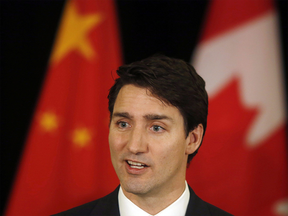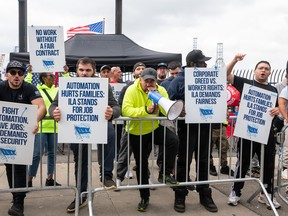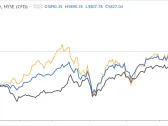Mark Warner, principal counsel at MAAW Law, recently spoke with Financial Post’s Larysa Harapyn about the current state of Canada-China trade relations and the potential cards Beijing could yet play in the dispute over 100% tariffs on Chinese electric vehicles.
The Trade War Between Canada and China: A Delicate Situation
Canada is currently caught in a complex web of trade tensions with China, a situation that can be described as "damned if you do, damned if you don’t." On one hand, Canada has been vocal about its concerns regarding the increasing protectionism in global trade. On the other hand, Beijing’s recent retaliatory measures have left Ottawa with limited options.
A Brief History of the Dispute
The current dispute between Canada and China began to unfold when Canada announced plans to impose 100% tariffs on Chinese electric vehicles (EVs) under Section 232 of the US Tariff Act. This move was seen as a response to Beijing’s retaliatory measures against Canadian agricultural products. The tariffs were set to take effect in January, but their implementation was delayed due to concerns from industry stakeholders.
China’s Retaliatory Measures: A Mixed Bag
In response to Canada’s tariffs on Chinese EVs, Beijing has announced its own retaliatory measures, which include a 15% tariff on Canadian pork and a 10% tariff on Canadian beef. While these measures are not as severe as those imposed by the US in the previous trade dispute, they still have significant implications for the Canadian economy.
The Role of Section 232: A Double-Edged Sword
Section 232 of the US Tariff Act is a provision that allows the US president to impose tariffs on imported goods if they are deemed necessary to protect national security. While this provision has been used extensively by the Trump administration, its implications for Canada’s trade relationship with China are far-reaching.
The Impact of Section 232 on Canadian Trade
Section 232 has not only led to the imposition of tariffs on Chinese EVs but also had a ripple effect on other Canadian industries. The tariffs have forced some Canadian manufacturers to reassess their supply chains and consider alternative markets for their products.
Canada’s Options: A Delicate Balance
Given the complex situation, Canada is now faced with limited options to address Beijing’s retaliatory measures. Ottawa can either comply with the 100% tariff on Chinese EVs or opt out of Section 232 altogether, which would put it at odds with its key trade partner, the United States.
A Conversation with Mark Warner
In a recent interview with Financial Post’s Larysa Harapyn, Mark Warner, principal counsel at MAAW Law, shed light on the current situation and the potential cards Beijing could yet play in the dispute:
"It is a delicate balance that Canada must strike," said Warner. "On one hand, Ottawa needs to navigate its relationship with China carefully, given the growing global tensions. On the other hand, it must also ensure that Canadian industries are protected from unfair trade practices."
The Potential Cards Beijing Could Yet Play
Beijing has already hinted at potential retaliatory measures if Canada proceeds with the tariffs on Chinese EVs. These could include a range of options, including:
- Trade barriers: Beijing could impose stricter regulations or requirements for Canadian imports.
- Investment restrictions: China could restrict investment from Canadian companies in sensitive sectors such as technology and energy.
- Diplomatic pressure: Beijing could apply diplomatic pressure on Canada to reconsider its stance.
A Conclusion: Navigating the Uncertainty
The current situation is a prime example of the "damned if you do, damned if you don’t" dilemma faced by Ottawa. As tensions between Canada and China continue to escalate, it remains to be seen how Ottawa will navigate this complex web of trade relations.
Sources:


